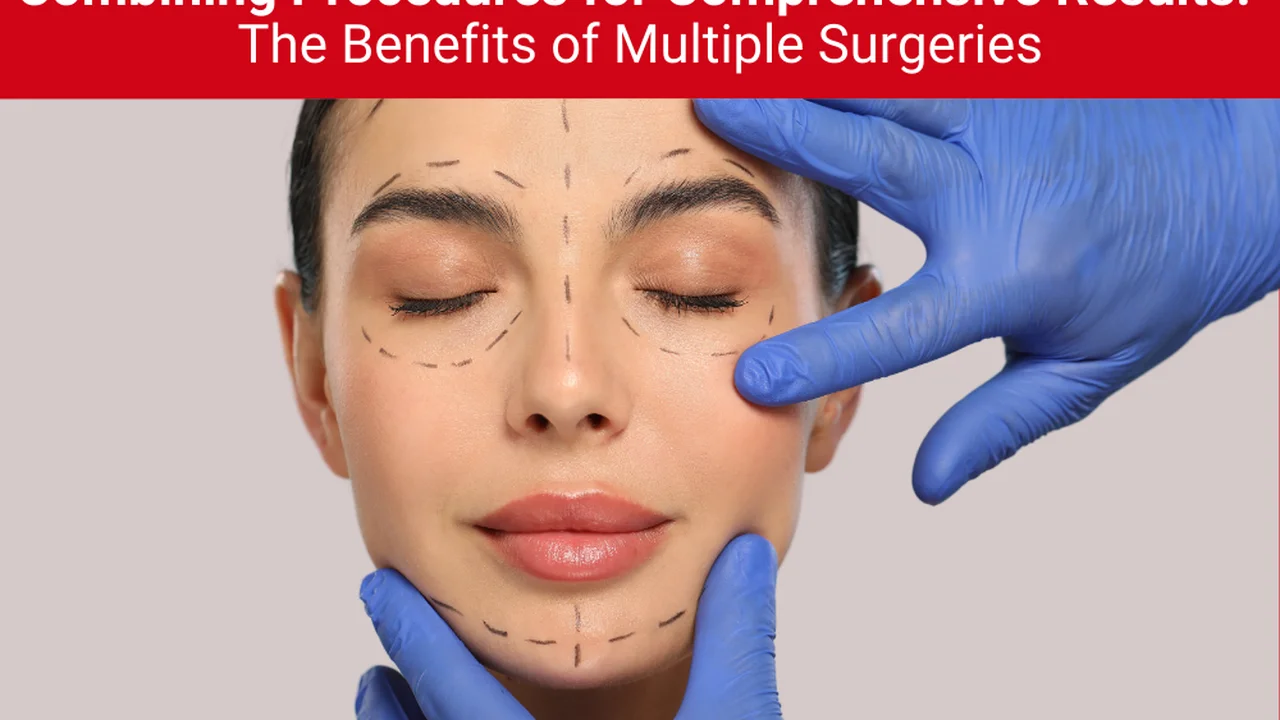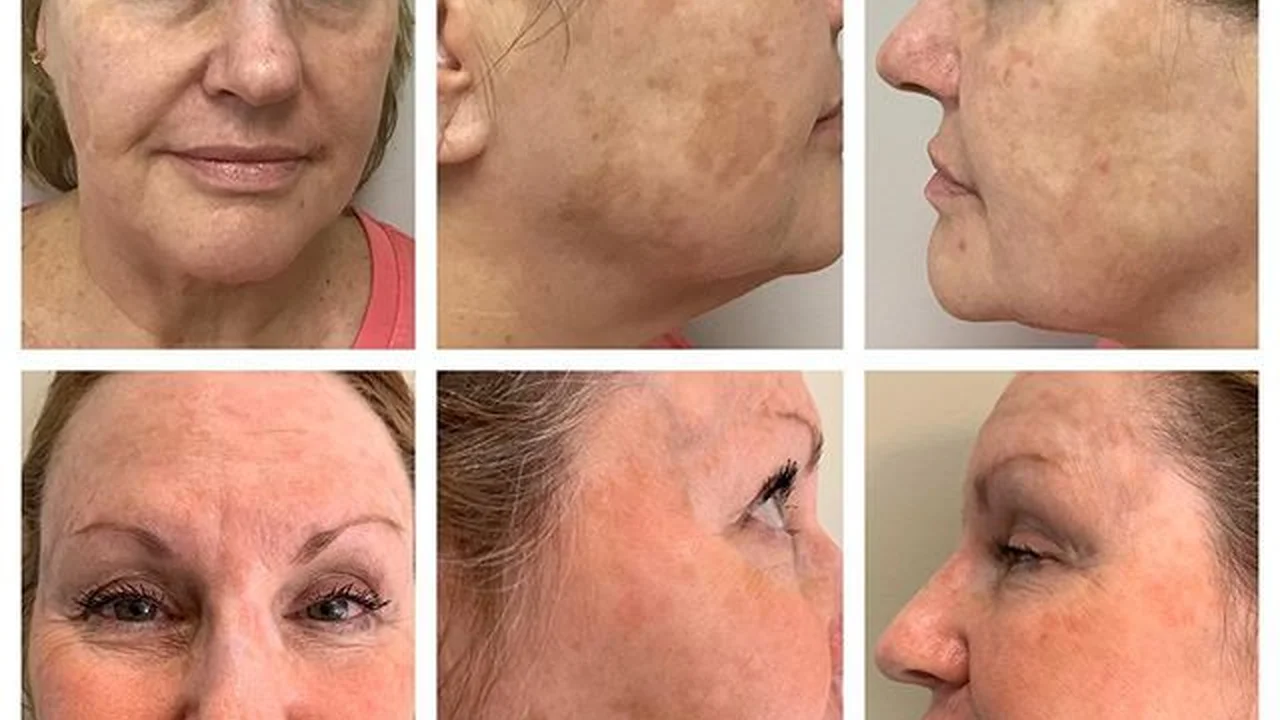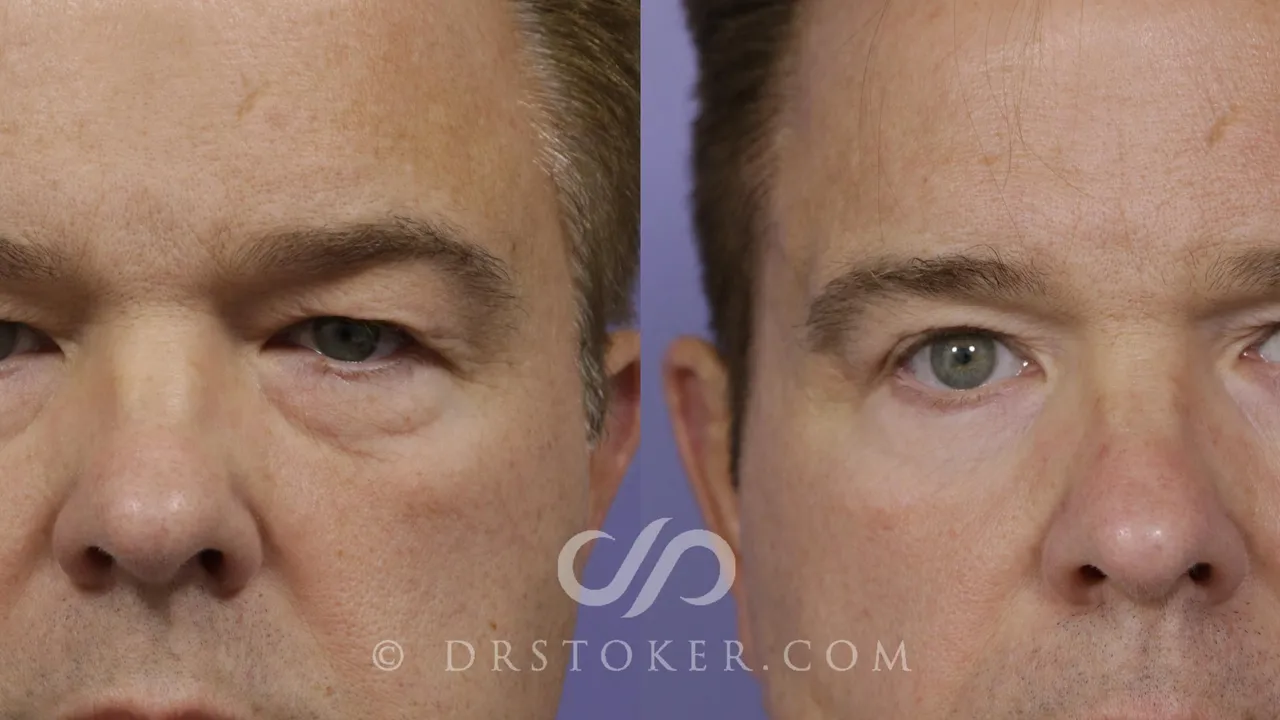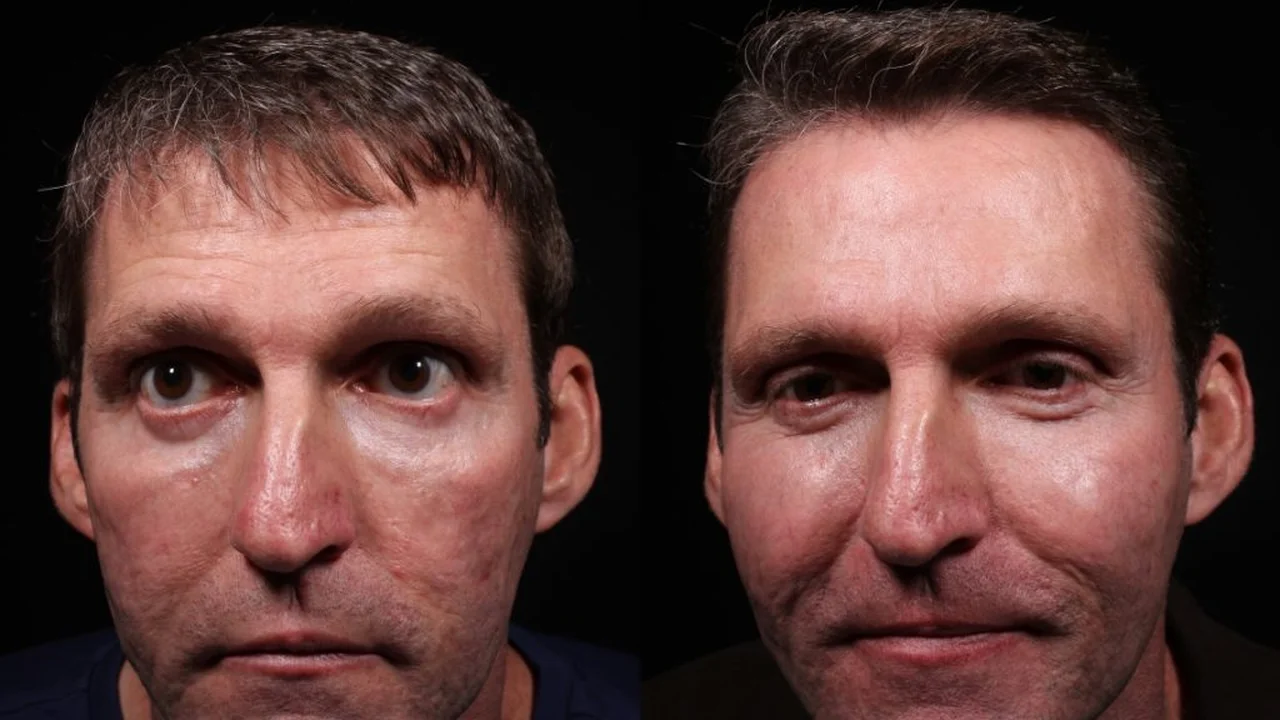Combining Surgical Procedures for Comprehensive Results

Understanding Surgical Facial Rejuvenation The Basics
Facial rejuvenation surgery, often sought after by individuals looking to turn back the clock or correct specific aesthetic concerns, encompasses a range of procedures designed to address signs of aging and improve overall facial appearance. It's not just about wrinkles; it's about restoring volume, redefining contours, and achieving a more youthful and balanced look. Before jumping into specific techniques, let's establish a foundational understanding of what surgical facial rejuvenation entails.
Think of your face as a complex landscape. Over time, factors like gravity, sun exposure, genetics, and lifestyle choices contribute to changes in this landscape. Skin loses elasticity, fat pads descend, and underlying bone structure can become more prominent. Surgical facial rejuvenation aims to counteract these effects by repositioning tissues, removing excess skin, and sometimes adding volume where it's needed.
Common concerns addressed by these procedures include:
* **Wrinkles and fine lines:** These are often the first signs of aging, appearing around the eyes (crow's feet), mouth (laugh lines), and forehead. * **Sagging skin:** Loss of elasticity leads to drooping of the cheeks, jowls, and neck. * **Volume loss:** As we age, we lose fat in the face, leading to a hollow or sunken appearance. * **Sunken eyes:** Hollowing under the eyes can create a tired or aged look. * **Double chin:** Excess fat and sagging skin under the chin can detract from the jawline.It's crucial to understand that surgical facial rejuvenation is not a one-size-fits-all solution. The best approach depends on your individual anatomy, specific concerns, and desired outcomes. A thorough consultation with a qualified and experienced facial plastic surgeon is essential to determine the most appropriate procedures for you.
Facelift Surgery Techniques Exploring Different Approaches
The facelift, or rhytidectomy, is arguably the most well-known facial rejuvenation procedure. However, the term "facelift" is quite broad, encompassing a variety of techniques that address different areas of the face and levels of tissue correction. Understanding these different approaches is key to choosing the right one for your needs.
Here's a breakdown of some common facelift techniques:
* **Traditional Facelift:** This technique addresses sagging skin in the mid-face, lower face, and neck. It involves incisions around the ears and potentially under the chin, allowing the surgeon to lift and reposition underlying tissues and remove excess skin. The traditional facelift provides the most comprehensive rejuvenation but also involves a longer recovery period. * **Mini Facelift:** A less invasive option, the mini facelift targets sagging skin in the lower face and jawline. It typically involves shorter incisions around the ears, resulting in a quicker recovery time. However, it's not suitable for individuals with significant sagging or volume loss. * **Mid-Facelift:** This focuses on lifting the cheeks and restoring volume to the mid-face area. It can be performed through incisions in the lower eyelid or through the hairline. The mid-facelift is ideal for individuals with drooping cheeks and a flattened appearance in the mid-face. * **SMAS Facelift:** SMAS stands for Superficial Musculoaponeurotic System. This technique involves lifting and tightening the deeper layers of facial tissue, providing a more natural and longer-lasting result. Most modern facelifts incorporate the SMAS technique. * **Deep Plane Facelift:** This is a more advanced technique that involves releasing the facial ligaments that hold the skin and tissues in place. This allows for a more significant lift and repositioning of the facial structures. The deep plane facelift is often used for individuals with significant sagging and volume loss.Choosing the right facelift technique depends on your individual anatomy, concerns, and desired outcomes. Your surgeon will assess your facial structure and discuss your goals to determine the best approach. Considerations include the degree of sagging, the amount of volume loss, and your overall health.
Eyelid Surgery Blepharoplasty Enhancing The Eyes
Eyelid surgery, also known as blepharoplasty, is a procedure designed to improve the appearance of the eyelids. It can address drooping upper eyelids, puffy lower eyelids, and wrinkles around the eyes, creating a more youthful and refreshed look. The eyes are often the first area to show signs of aging, making blepharoplasty a popular choice for facial rejuvenation.
Blepharoplasty can be performed on the upper eyelids, lower eyelids, or both. Here's a look at what each procedure entails:
* **Upper Eyelid Blepharoplasty:** This procedure involves removing excess skin and fat from the upper eyelids. It can improve vision that is obstructed by drooping eyelids and create a more open and alert appearance. The incision is typically made in the natural crease of the upper eyelid, minimizing the visibility of the scar. * **Lower Eyelid Blepharoplasty:** This procedure addresses puffy lower eyelids and wrinkles under the eyes. It can involve removing or repositioning fat and tightening the skin. The incision can be made either inside the lower eyelid (transconjunctival approach) or just below the eyelashes (subciliary approach). The transconjunctival approach leaves no visible scar.Blepharoplasty can be combined with other facial rejuvenation procedures, such as a facelift or brow lift, to achieve a more comprehensive result. It's important to discuss your goals and concerns with your surgeon to determine the best approach for your individual needs.
Potential risks and complications of blepharoplasty include:
* **Dry eyes:** This is a common temporary side effect. * **Difficulty closing the eyes:** This is rare but can occur if too much skin is removed. * **Ectropion:** This is a condition where the lower eyelid turns outward. * **Hematoma:** This is a collection of blood under the skin. * **Infection:** This is rare but can occur with any surgery.Brow Lift Techniques Elevating The Forehead
A brow lift, also known as a forehead lift, is a procedure designed to elevate the eyebrows and reduce wrinkles on the forehead. As we age, the eyebrows can droop, creating a tired or angry appearance. A brow lift can restore a more youthful and refreshed look by lifting the eyebrows and smoothing out forehead wrinkles.
There are several different brow lift techniques, including:
* **Coronal Brow Lift:** This technique involves making an incision across the top of the head, from ear to ear. The forehead skin is then lifted, and excess skin is removed. The coronal brow lift provides the most significant lift but also leaves a longer scar. It's less commonly performed today due to the availability of less invasive techniques. * **Endoscopic Brow Lift:** This technique involves making several small incisions in the scalp. A small camera and surgical instruments are inserted through these incisions to lift the eyebrows and smooth out forehead wrinkles. The endoscopic brow lift is less invasive than the coronal brow lift and results in smaller scars. * **Temporal Brow Lift:** This technique involves making an incision near the temples, above the ears. The outer portion of the eyebrow is then lifted, creating a more youthful and refreshed look. The temporal brow lift is ideal for individuals with drooping eyebrows in the outer corners. * **Hairline Brow Lift:** This technique involves making an incision along the hairline. The forehead skin is then lifted, and excess skin is removed. The hairline brow lift is ideal for individuals with a high hairline.The best brow lift technique for you will depend on your individual anatomy, concerns, and desired outcomes. Your surgeon will assess your facial structure and discuss your goals to determine the most appropriate approach.
Neck Lift Surgery Addressing The Neck Area
A neck lift, also known as a platysmaplasty, is a procedure designed to improve the appearance of the neck. It can address sagging skin, excess fat, and vertical bands in the neck, creating a more youthful and defined jawline. The neck is often overlooked in facial rejuvenation, but it plays a crucial role in overall facial harmony.
A neck lift can involve the following:
* **Liposuction:** This involves removing excess fat from under the chin and in the neck. * **Platysmaplasty:** This involves tightening the platysma muscle, which is the muscle that runs from the chest to the jawline. This can help to reduce vertical bands in the neck. * **Cervicoplasty:** This involves removing excess skin from the neck.The incision for a neck lift is typically made under the chin and behind the ears. The extent of the incision will depend on the amount of correction needed.
A neck lift is often combined with a facelift to achieve a more comprehensive rejuvenation of the face and neck. It's important to discuss your goals and concerns with your surgeon to determine the best approach for your individual needs.
Chin Augmentation Improving Facial Harmony
Chin augmentation, also known as mentoplasty, is a procedure designed to improve the projection and shape of the chin. A weak or receding chin can detract from overall facial harmony and make the nose appear larger. Chin augmentation can enhance the balance of the face and create a more defined jawline.
Chin augmentation can be performed using:
* **Chin Implant:** This involves inserting a silicone or other biocompatible implant into the chin. The implant is placed through an incision either inside the mouth or under the chin. * **Sliding Genioplasty:** This involves cutting and repositioning the chin bone. This technique provides a more natural and permanent result.The choice between a chin implant and a sliding genioplasty will depend on the degree of correction needed and your individual anatomy. Your surgeon will assess your facial structure and discuss your goals to determine the most appropriate approach.
Fat Grafting For Facial Rejuvenation Restoring Volume
Fat grafting, also known as fat transfer or lipofilling, is a procedure that involves harvesting fat from one area of the body (such as the abdomen or thighs) and injecting it into another area of the face to restore volume and improve contour. As we age, we lose fat in the face, leading to a hollow or sunken appearance. Fat grafting can replenish this lost volume and create a more youthful and refreshed look.
Fat grafting can be used to address a variety of concerns, including:
* **Hollow cheeks:** Fat grafting can restore volume to the cheeks, creating a more youthful and sculpted appearance. * **Sunken eyes:** Fat grafting can fill in the hollows under the eyes, reducing the appearance of dark circles and fatigue. * **Thin lips:** Fat grafting can plump up the lips, creating a more sensual and youthful look. * **Wrinkles and fine lines:** Fat grafting can fill in wrinkles and fine lines, improving skin texture and appearance.The fat grafting procedure involves three steps:
1. **Liposuction:** Fat is harvested from a donor area using liposuction. 2. **Processing:** The harvested fat is processed to remove impurities. 3. **Injection:** The purified fat is injected into the targeted areas of the face.Fat grafting is a natural and long-lasting way to restore volume to the face. However, it's important to note that not all of the injected fat will survive. Typically, about 50-70% of the injected fat will remain permanently.
Chemical Peels And Laser Resurfacing Skin Rejuvenation
While not strictly surgical, chemical peels and laser resurfacing are important adjunctive procedures in facial rejuvenation. They address surface imperfections, improve skin texture, and can enhance the results of surgical procedures. These treatments work by removing the outer layers of damaged skin, stimulating collagen production and revealing smoother, younger-looking skin.
**Chemical Peels:** These involve applying a chemical solution to the skin, which causes the outer layers to peel off. Different types of peels are available, ranging from superficial peels that address mild imperfections to deep peels that provide more dramatic results.
* **Superficial Peels:** These use mild acids like alpha-hydroxy acids (AHAs) to exfoliate the skin and improve its texture. They are often used to treat acne, fine lines, and uneven skin tone. Example: Glycolic acid peel. * **Medium Peels:** These use stronger acids like trichloroacetic acid (TCA) to penetrate deeper into the skin and address more significant wrinkles, sun damage, and age spots. * **Deep Peels:** These use the strongest acids, such as phenol, to provide the most dramatic results. They can significantly reduce wrinkles, scars, and age spots. Deep peels require a longer recovery period and carry a higher risk of complications.**Laser Resurfacing:** This involves using a laser to remove the outer layers of damaged skin. Different types of lasers are used, each with its own advantages and disadvantages.
* **Ablative Lasers:** These lasers remove the outer layers of skin, providing significant results. Examples include CO2 lasers and Erbium YAG lasers. They are effective for treating wrinkles, scars, and sun damage. * **Non-Ablative Lasers:** These lasers heat the underlying skin without removing the outer layers. They are less invasive than ablative lasers and have a shorter recovery period. Non-ablative lasers are often used to improve skin texture and reduce fine lines.The choice between chemical peels and laser resurfacing will depend on your individual skin type, concerns, and desired outcomes. A consultation with a qualified dermatologist or plastic surgeon is essential to determine the best treatment for you.
Non-Surgical Facial Rejuvenation Options Alternatives To Surgery
While surgical facial rejuvenation offers the most dramatic and long-lasting results, there are also a variety of non-surgical options available that can help to improve facial appearance. These treatments are less invasive than surgery and typically have a shorter recovery period. They are ideal for individuals who are not ready for surgery or who want to maintain their youthful appearance between surgical procedures.
Some popular non-surgical facial rejuvenation options include:
* **Botulinum Toxin Injections (Botox, Dysport, Xeomin):** These injections relax the muscles that cause wrinkles, such as frown lines, forehead wrinkles, and crow's feet. The effects typically last for 3-6 months. * **Product Recommendation:** Botox is a widely recognized and trusted brand. * **Use Case:** Reduces wrinkles between the eyebrows (glabellar lines). * **Comparison:** Botox vs. Dysport - Dysport may spread slightly more, potentially affecting a larger area but also increasing the risk of affecting unintended muscles. * **Details:** Average cost per unit is $10-15. Results typically seen within 3-7 days. * **Dermal Fillers (Juvederm, Restylane, Sculptra):** These injections add volume to the face, filling in wrinkles and hollows. Different types of fillers are available, each with its own properties and duration of effect. * **Product Recommendation:** Juvederm Voluma is excellent for cheek augmentation. * **Use Case:** Restoring volume to the cheeks. * **Comparison:** Juvederm vs. Restylane - Juvederm tends to be smoother, while Restylane can provide more lift. Sculptra stimulates collagen production for gradual volume enhancement. * **Details:** Juvederm Voluma can last up to 2 years. Cost per syringe ranges from $700-$1000. * **Microneedling:** This involves using a device with tiny needles to create micro-injuries in the skin. This stimulates collagen production and improves skin texture. * **Ultrasound Skin Tightening (Ultherapy):** This uses focused ultrasound energy to heat the deep layers of the skin, stimulating collagen production and tightening the skin. * **Radiofrequency Skin Tightening:** This uses radiofrequency energy to heat the skin, stimulating collagen production and tightening the skin.Non-surgical treatments can provide noticeable improvements in facial appearance, but their results are typically temporary. Regular maintenance treatments are necessary to maintain the results.
Preparing For Surgical Facial Rejuvenation What To Expect
Preparing for surgical facial rejuvenation is a crucial step in ensuring a successful outcome. It involves a thorough consultation with your surgeon, understanding the procedure, and making necessary lifestyle adjustments. Proper preparation can minimize risks, optimize healing, and help you achieve your desired results.
Here are some key steps to take when preparing for surgical facial rejuvenation:
* **Consultation with your surgeon:** This is the most important step. Discuss your goals, concerns, and medical history with your surgeon. They will examine your face, assess your skin, and determine the best procedures for you. * **Medical evaluation:** Your surgeon may order blood tests and other medical evaluations to ensure that you are healthy enough for surgery. * **Medication review:** Inform your surgeon about all medications, supplements, and herbal remedies you are taking. Some medications, such as blood thinners, may need to be stopped before surgery. * **Smoking cessation:** Smoking can impair healing and increase the risk of complications. It's essential to stop smoking at least several weeks before surgery. * **Alcohol consumption:** Limit alcohol consumption in the weeks leading up to surgery. * **Skin care:** Follow your surgeon's instructions regarding skin care. You may need to use specific creams or lotions to prepare your skin for surgery. * **Arrange for transportation and aftercare:** You will need someone to drive you home after surgery and help you with your recovery. * **Prepare your home:** Make sure your home is comfortable and safe for your recovery. Stock up on supplies, such as pain medication, ice packs, and soft foods.Recovery After Surgical Facial Rejuvenation The Healing Process
The recovery period after surgical facial rejuvenation varies depending on the specific procedures performed. It's essential to follow your surgeon's instructions carefully to ensure proper healing and minimize complications. Understanding the recovery process can help you manage expectations and prepare for any discomfort or downtime.
Here are some common aspects of the recovery process:
* **Swelling and bruising:** Swelling and bruising are common after surgery. They typically peak within the first few days and gradually subside over several weeks. * **Pain and discomfort:** You will likely experience some pain and discomfort after surgery. Your surgeon will prescribe pain medication to help manage the pain. * **Dressings and bandages:** You will likely have dressings and bandages on your face after surgery. Your surgeon will instruct you on how to care for them. * **Incision care:** Keep your incisions clean and dry. Follow your surgeon's instructions regarding wound care. * **Activity restrictions:** Avoid strenuous activities for several weeks after surgery. * **Follow-up appointments:** Attend all scheduled follow-up appointments with your surgeon. * **Sleep position:** Sleep with your head elevated for the first few weeks after surgery to reduce swelling. * **Sun protection:** Protect your skin from the sun after surgery. Use sunscreen and wear a hat when outdoors.It's important to be patient during the recovery process. It can take several months for the final results of your surgery to become apparent. Contact your surgeon if you experience any unusual symptoms or concerns.
Potential Risks And Complications Of Facial Rejuvenation Surgery
Like all surgical procedures, facial rejuvenation surgery carries potential risks and complications. While these complications are rare, it's important to be aware of them before undergoing surgery. Discussing these risks with your surgeon during your consultation is essential for informed decision-making.
Some potential risks and complications of facial rejuvenation surgery include:
* **Infection:** Infection is a rare but serious complication. * **Hematoma:** A hematoma is a collection of blood under the skin. * **Nerve damage:** Nerve damage can cause numbness, tingling, or weakness in the face. * **Scarring:** Scarring is an inevitable part of surgery. However, your surgeon will take steps to minimize scarring. * **Poor wound healing:** Poor wound healing can lead to infection and scarring. * **Asymmetry:** Asymmetry is a condition where one side of the face is different from the other. * **Skin discoloration:** Skin discoloration can occur after surgery. * **Hair loss:** Hair loss can occur along the incision lines. * **Anesthesia complications:** Anesthesia complications are rare but can be serious.Choosing a qualified and experienced facial plastic surgeon can help to minimize the risk of complications. It's also important to follow your surgeon's instructions carefully before and after surgery.
Choosing The Right Facial Plastic Surgeon Finding Expertise
Choosing the right facial plastic surgeon is arguably the most critical factor in achieving successful and satisfying results from facial rejuvenation surgery. It's not just about finding someone who can perform the procedure; it's about finding someone with the expertise, experience, and artistic vision to tailor the surgery to your individual needs and goals. A qualified surgeon will prioritize your safety, provide realistic expectations, and deliver natural-looking results.
Here are some key factors to consider when choosing a facial plastic surgeon:
* **Board certification:** Make sure your surgeon is board certified by the American Board of Facial Plastic and Reconstructive Surgery (ABFPRS) or the American Board of Plastic Surgery (ABPS). Board certification indicates that the surgeon has met rigorous training and examination standards. * **Experience:** Look for a surgeon who has extensive experience performing the specific procedures you are interested in. * **Specialization:** Choose a surgeon who specializes in facial plastic surgery. This ensures that they have a deep understanding of facial anatomy and aesthetics. * **Before and after photos:** Review before and after photos of the surgeon's patients to assess their aesthetic sensibility and skill. * **Patient reviews:** Read online reviews from other patients to get an idea of the surgeon's reputation and patient satisfaction. * **Consultation:** Schedule a consultation with the surgeon to discuss your goals, concerns, and medical history. This is an opportunity to ask questions and get to know the surgeon. * **Communication:** Choose a surgeon who communicates clearly and listens to your concerns. * **Comfort level:** Choose a surgeon with whom you feel comfortable and confident.Maintaining Your Results Long Term Care
Facial rejuvenation surgery can provide long-lasting results, but it's important to maintain those results with proper skincare and lifestyle choices. While surgery can turn back the clock, it doesn't stop the aging process entirely. Adopting a healthy lifestyle and following a consistent skincare routine can help you preserve your youthful appearance for years to come.
Here are some tips for maintaining your results long-term:
* **Sun protection:** Sun exposure is the leading cause of skin aging. Protect your skin from the sun by using sunscreen daily, wearing a hat, and avoiding prolonged sun exposure. * **Skincare routine:** Follow a consistent skincare routine that includes cleansing, exfoliating, moisturizing, and using anti-aging products. * **Healthy diet:** Eat a healthy diet rich in fruits, vegetables, and antioxidants. * **Regular exercise:** Regular exercise can improve circulation and skin health. * **Stress management:** Manage stress through relaxation techniques such as yoga or meditation. * **Non-surgical treatments:** Consider non-surgical treatments, such as Botox and dermal fillers, to maintain your results and address new signs of aging. * **Follow-up appointments:** Continue to see your surgeon for regular follow-up appointments.By following these tips, you can help to maintain your results and enjoy a youthful and refreshed appearance for years to come.
:max_bytes(150000):strip_icc()/277019-baked-pork-chops-with-cream-of-mushroom-soup-DDMFS-beauty-4x3-BG-7505-5762b731cf30447d9cbbbbbf387beafa.jpg)






